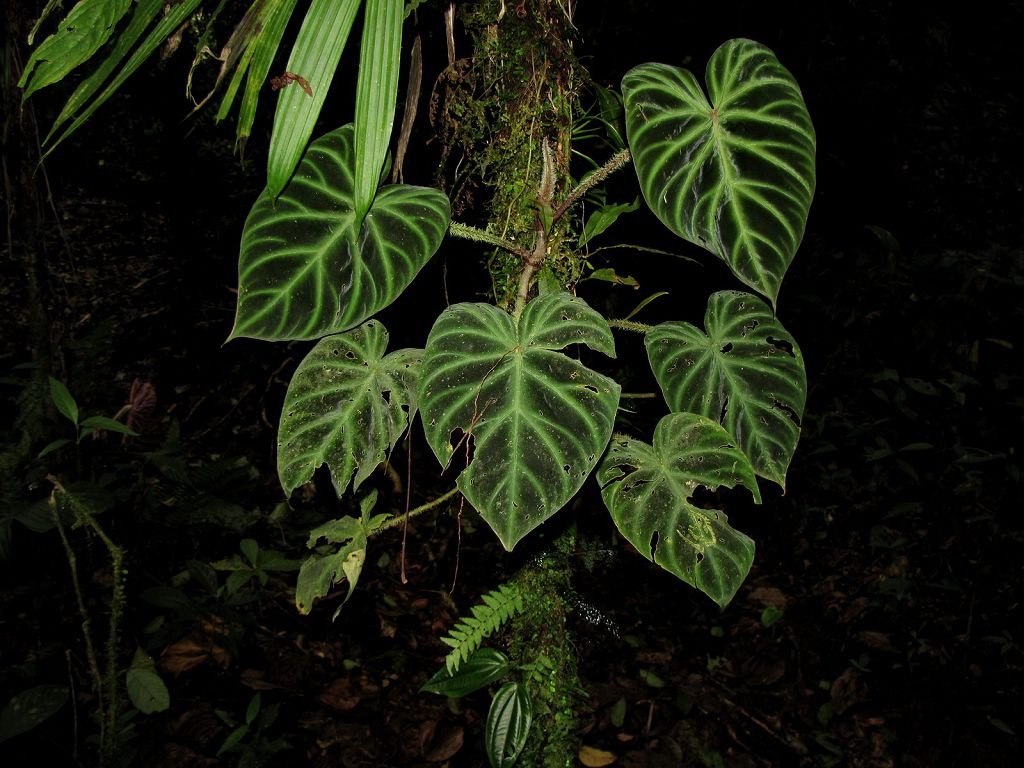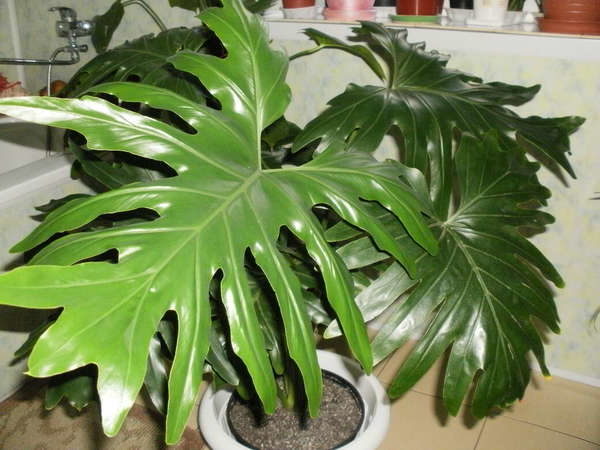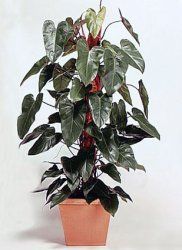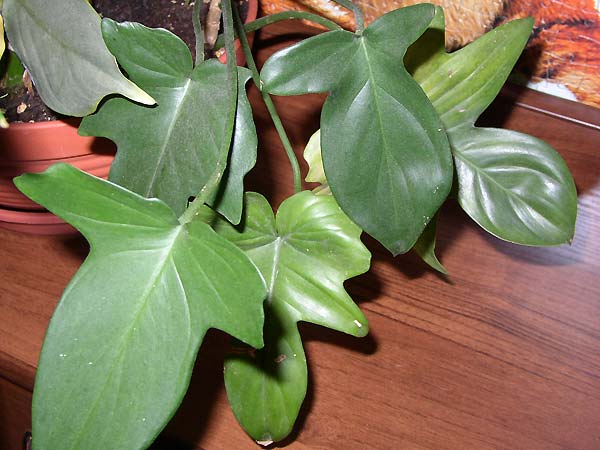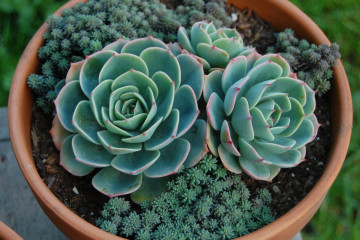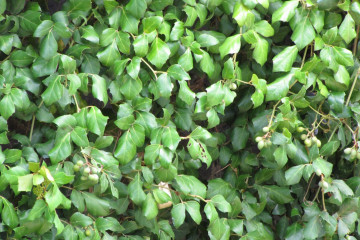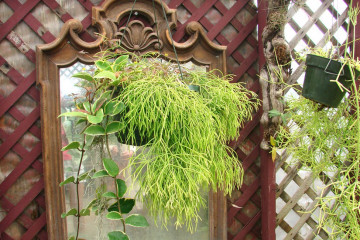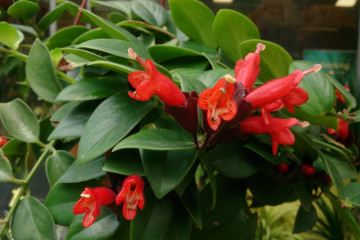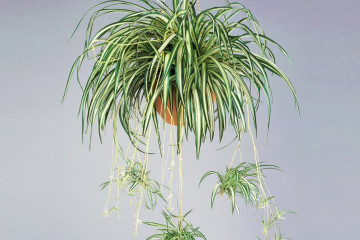Philodendron home care and reproduction
Content:
The botanical name of the plant Philodéndron comes from the Greek "Phileo Dendron" - "I love a tree." This evergreen perennial plant comes from the rainforests of Australia, America, and the Pacific Islands. Philodendron got the name "loving tree" for a reason, the vine needs natural support. In humid and hot tropics, some species reach gigantic proportions, twisting neighboring trees with clinging roots.
Description of the flower
The stem of the plant is fleshy, covered with a layered bark at the base. Leaves are leathery, dense texture. Their shape is surprisingly diverse: there are pinnately dissected, finger-like, arrow-shaped, oval, lobed, heart-shaped.
In nature, the size of adult vines ranges in length from two or more meters. The indoor philodendron, registered in the Guinness Book of Records, grew up in the UK, its length was 169 m.
Philodendron: home care
To provide liana philodendron with home care, it is important to provide several points:
- based on the parameters of an adult plant of a particular species, a room is chosen where the flower will have enough space for growth;
- the place for a container with a flower should be well lit, but out of reach of direct sunlight. For varieties with a variegated color, more light is needed than evenly colored. Only reddening and climbing species can endure a light shadow;
- the optimal temperature in the room will be 20-25 ° С in summer and not lower than 15 ° С in winter;
- the philodendron does not tolerate drafts.
Watering and moisture
The most important condition for keeping vines is to ensure a comfortable level of humidity in the room. During the hot period, the plant can withstand a significant increase in temperature, provided that the leaves are sprayed or shower.
Watering frequency depends on the room temperature. You need to focus on the state of the top layer of soil in the pot; it should not be allowed to dry out. The plant is spilled generously, but after an hour, excess water must be drained from the pan. For watering the philodendron, use soft, lime-free water. To do this, you can boil or defend tap water or collect rainwater.
It is possible to increase the humidity of the air, especially during the heating season, with the help of regular wiping and irrigation of the leaves from a spray bottle. A plant support that mimics a tree trunk, as a rule, is covered with coconut fiber or a synthetic substitute. By wetting such a coating, you can additionally provide comfort to the moisture-loving philodendron.
Features of planting and transplanting
It is advisable to plant the acquired plant immediately. For this:
- A pot or container is selected that is larger than the root system.
- Drainage holes are made at the bottom of the container, a drainage layer is laid out.
- Install a support suitable for the dimensions of the vines.
- Trying not to destroy the earthen lump, remove the store container and transfer the plant into a prepared container.
- The soil for planting should be nutritious and light with low acidity. Fill the pot with the plant carefully, adding soil, shaking slightly to prevent voids around the roots.
- Having filled the planting container to the top, the plant is spilled with settled water at room temperature. If the soil settles, it is added and re-watered.
Young vines need an annual transplant. A tight pot oppresses the root system, the plant begins to wither.
An adult philodendron is transplanted every 2-3 years as it grows, moving the plant to a more spacious container. In some cases, the plant requires an urgent transplant:
- dense packed soil covered with moss signals regular waterlogging, the root system can rot;
- the presence of white spots and streaks on the surface is a consequence of soil salinization;
- the roots of the plant are visible from the drainage holes;
- slowing the growth of vines, chopping foliage;
- the appearance of pests.
In these cases, the plant is replanted after careful root preparation. To do this, you should:
- Rinse the roots with prepared water at room temperature.
- Examine the root system, cut off the damaged parts.
- Treat with a weak solution of potassium permanganate, basezol or phytosporin according to the instructions.
- In case of further use, the container with the drain is disinfected.
- You need to plant the plant in new soil.
Plant location
A large well-groomed plant will decorate any spacious room, a winter garden, a covered terrace, a lobby. The decorativeness of large-sized philodendrons is actively used in the design of residential premises to delimit space.
Compact species of lianas feel great near east and west windows.
Resting care
During the growing season, plants are fertilized for active growth. Mineral fertilizers and organic matter are applied monthly from early spring to early autumn. With the onset of cold weather, watering and feeding is reduced to a minimum. By the end of February, the resting period for philodendrons ends. This time is optimal for transplanting young vines.
Reproduction of philodendron
To preserve its decorative effect, it is recommended to periodically rejuvenate the philodendron.
You can propagate your favorite liana using:
- seeds;
- cuttings;
- air layouts;
- tops;
- leaves
- fragments of the trunk.
Rooting of air layers
Rooting a suitable shoot with aerial layering is not difficult. It must be placed in moistened soil, secured with a wire or hairpin. One month after germination, the new plant is separated from the mother bush.
Propagation by cuttings and leaves
This method, how to propagate a philodendron using cuttings, does not require special skills. Here it is important to observe the temperature regime of 25-30 ° C and provide future sprouts with increased humidity. To do this, a cut-off plastic bottle is used as a mini greenhouse, it is installed with the lid to the top for airing. The apical or stem shoot for rooting should have 2-3 leaves, and the leaf cutting should have an aerial root or "heel".
The cuttings are planted in moist light soil, having previously dipped the root with a cut in powder. After 2-3 weeks, when 3-4 cm long roots are formed, young vines are seated in separate containers.
Growing from seeds
The tree philodendron, in addition to the usual methods, can also propagate by seeds. It is important to use quality seed:
- The seed is soaked in boiled or distilled water for 10-12 hours.
- Seeds are placed in a prepared container (it is convenient to use a transparent plastic container) with a wet peat mixture; there is no need to sprinkle and deepen them.
- The container is closed and placed in a lighted place, avoiding direct sunlight.
- Within 1.5-2 weeks before the sprouts appear, the seeds are aired daily, moistened with a spray bottle.
- With the appearance of the third leaf, the container is no longer closed.
- The matured seedlings are transplanted to a permanent place in 2.5-3 months.
Typical mistakes of novice growers
The main reason for mistakes in caring for a room vine is non-compliance with agricultural technology. When choosing a specific type of plant, you need to consult with the seller, find information on the Internet. To understand why the philodendron has wilted, you need to monitor the changes during care. Any discomfort of the vine is reflected in its leaves.
Philodendron diseases and pests
Competent and responsible plant care allows you to avoid many problems. So, bacterial spotting develops due to heat and waterlogging. You can identify it by the watery spots on the sheets. A red border appears in the lower part of the plant in the form of a brownish-red bordering of the leaf plates.
The damaged areas must be removed, the sections must be disinfected, the plant must be treated with a fungicidal preparation. In case of extensive disease, the philodendron is destroyed.
Among the pests of indoor vines are:
- shield;
- thrips;
- spider mite.
Philodendron is an indoor flower, so it can become infected with pests from other plants growing nearby. To combat them, chemicals are used - insecticides and acaricides.
Popular varieties
In Russia, the following flower varieties are most popular.
Philodendron blushing
A bright accent with careful care will create an elegant blushing philodendron at home.
Graceful, fragile shoots reach 1.8 m in height. The trunk of an adult plant is covered with bark. Leaves are two-colored, green on the outside and reddening on the back. The rounded leaf plate has a spear-shaped end, growing up to 30 cm long and 25 cm wide. The leaf petiole at the base is red.
Philodendron climbing
Flexible liana, which grows up to 2 m in length. The leaves are shiny, shaped like a heart. They are not large, the length and width are 15 cm and 8 cm, respectively. Young foliage casts bronze, mature dark green. For the ability to climb on supports, this species is also called ivy. Can be used as an ampelous plant in hanging pots.
Philodendron guitar
In a tropical forest it grows up to 6 m, in a city house - no more than 2 m. The guitar-shaped philodendron, like many of its relatives, is of particular interest for its variability. Young leaves, initially heart-shaped, with age become like a guitar, grow up to 30 cm in length.
Philodendron is unpretentious in care, its unusual beauty has earned the well-deserved interest of plant breeders. The most popular varieties can be grown even in small apartments. Lianas Sello (Zello), Xandu tricolor, Imperial are spectacular plants that have firmly settled in the homes of exotic lovers.
